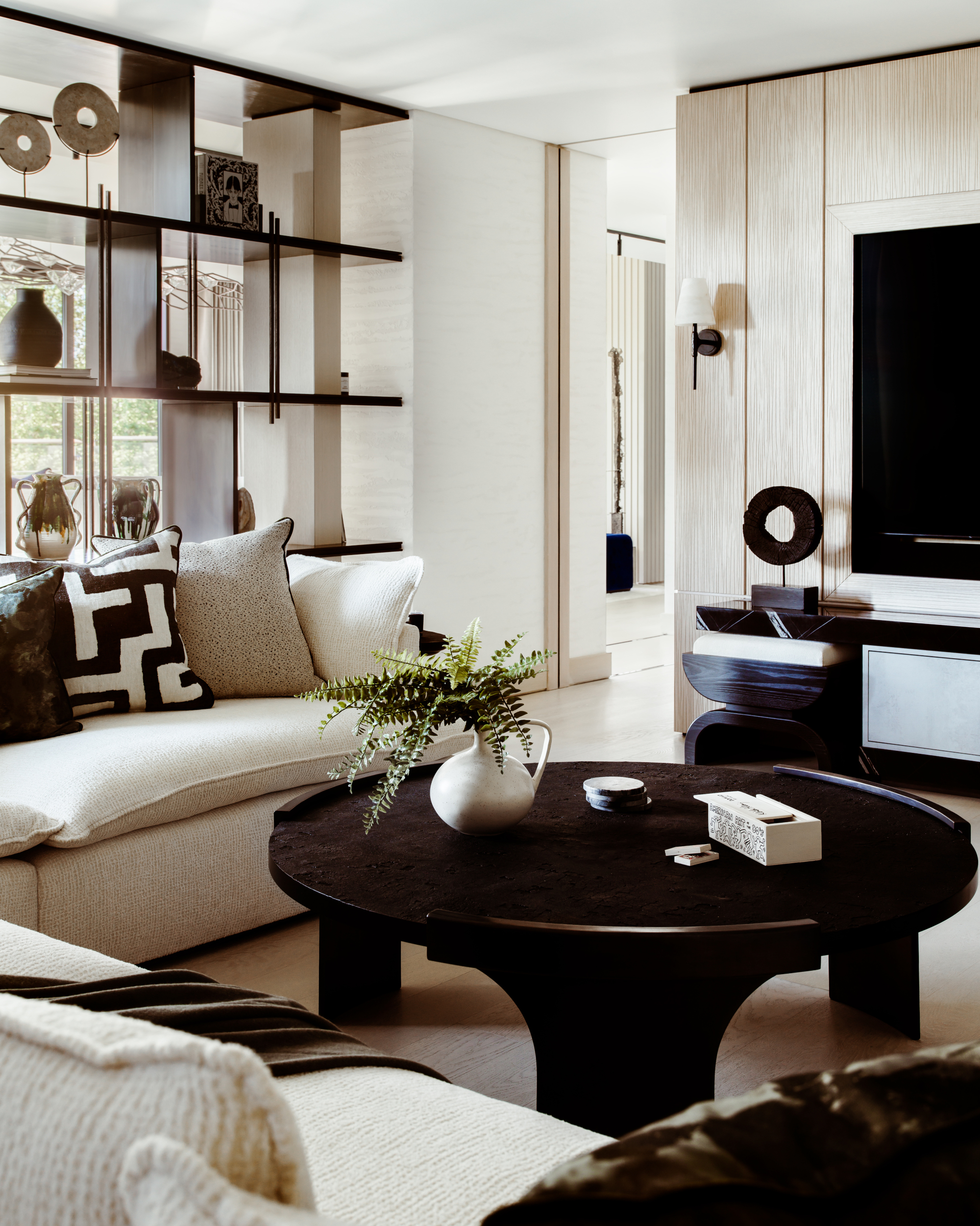How to commission bespoke furniture
Commissioning bespoke furniture will give your interior design project that elusive uniqueness – here's how to do it


Like a perfectly tailored Savile Row suit, a bespoke piece of furniture should fit perfectly, function beautifully and look fantastic: some go as far as to dub it 'interior couture'. Like their catwalk counterparts, artisan-designed solutions are an investment, but they guarantee stand-out and esoteric results.
A bespoke piece of furniture can also be the answer to practical problems such as unusual layouts and wonky walls. In some scenarios, it presents an opportunity to flex a creative interior design muscle that has been lying dormant or solves a quandary that can’t be resolved with existing furniture.
Either way, commissioning a bespoke piece of furniture is not only a chance to have something completely individual, tailored to your tastes as well as helping to support a rich tradition of furniture design and craftsmanship – both in the US and the UK.
Why commission bespoke furniture?
For certain markets, commissioning bespoke items appeals to those who don’t want to have recognizable fabrics, wallcoverings or furniture in their houses. Having something made is the only way to guarantee that.
'It can answer design challenges too,' says Mike Fisher, founder and creative director of Studio Indigo. 'The table that can seat for every day can extend to seat 24 with ease. Other times it’s simply impossible to find the right piece at the right price, finish or scale – going bespoke allows us to create the perfect piece.'
But it also attracts those who like the idea of supporting the arts and craftsmanship, as well as the satisfaction of owning an original piece that will endure for generations. 'There’s a growing awareness of sustainability and things made with integrity which will be passed down the generations,' says Bruce Hodgson of Somerset-based bespoke joinery firm Artichoke Ltd.
'The most enjoyable element of my job is working with people who have incredible passion and knowledge of their craft. If you have the chance to commission a bespoke piece you will learn so much, both about the process of artistic work, and your own creative ability. You will end up with an heirloom will tell a personal story,' says interior designer Rachel Chudley.
'The one thing I always go bespoke with is the sofa. It’s such a satisfying thing to do. We spend so much of our time lying back on the sofa at home that it may as well be exactly as you want it. They can be both really comfortable and really beautiful if you go bespoke.'
Establishing taste before commissioning bespoke furniture
'Taste is incredibly personal which means you can’t make mistakes,' believes Yelena Ford, managing director of The New Craftsmen, a London-based gallery which showcases over 100 of the most exciting craftspeople in the UK. 'Sometimes removing the misnomer of "good taste" out of the equation is the most important first step.'
Taking time to look at interiors magazines, both those of today and ones that were printed around the time of childhood to see if anything evokes an emotional response, is another good tip. 'If there is an image or object that you love, really look at it and write down a series of words which describe the piece and how it makes you feel,' recommends Yelena. 'And never worry about inventing a word – 90% of the time, we'll know exactly what you mean.'
Choosing the maker
Look at Instagram for inspiration. Lots of makers don’t have established websites with high Google rankings but can be found much more easily on social media. Don’t forget to ask around too – word of mouth recommendations are very powerful – and take a look at past commissions.
Where possible, try to meet the maker. Chemistry and trust are so important for the commissioning journey, on both sides. 'The thing I often find myself saying to bespoke clients, is that we do our very best work when our client understands and is excited by the reason we exist: to use beautiful, overlooked and underused British wood,' says Brogan Cox, director of award-winning London-based furniture designers Sebastian Cox.
'While it may seem scary to start the process of creating a bespoke piece, as soon as you talk to the makers, I think the daunting part of it pretty much disappears,' says interior designer Rachel Chudley. 'The amazing craftspeople I work with are some of the nicest people ever, and will work with you to make your vision a reality. Just go for it - and remember you’re supporting an artist making a living, rather than a high street brand, and often there’s not even a notable difference in price.
'I would suggest that you work closely with makers you like. As I’m working for clients, I liaise with craftspeople constantly because there are so many details that have to be checked over. If it’s an item you’re getting for yourself, then it’s up to you how involved you want to get. If you’re a bit of a control freak then definitely check in all the time, but if you’re happy to trust you’ll love what the maker comes up with then just do that.'
How to commission bespoke furniture
Start by defining the brief. Part art and part science, a brief needs to capture the visual mood of the piece and then all the technical aspects as well. Beginning with visuals, include reference images either torn from magazines, historical images from museums or made on a Pinterest mood board.
Then it’s up to the maker to interpret or translate this. 'It’s surprisingly easy to do this,' says furniture designer Rupert Bevan who makes both free-standing and fitted furniture for clients from his studio in Notting Hill. 'But the best way is for us to ask the right questions. That can be about whether they are left or right handed or how tall or short they are and – vitally – where the piece is going to sit in the room. These details prevent lots of last-minute alterations down the line.'
Interior decorator Susie Atkinson has a long history of commissioning bespoke piece for her projects. 'First find out where it will go; what will it be used for; what size does it need to be; what – if anything – will be stored inside; and is it in a high traffic area.
'Then I need to understand how important this piece needs to feel in the room – is it the star of the show or in the background,' continues Susie who enjoys encouraging makers to put their skills to new pastures – recently she’s been using a workshop that makes road bollards and signs to create stainless steel drum side table.
Commissioning bespoke furniture to a budget
All those with experience in commissioning and making pieces agree that having a discussion about the cost at the earliest stage is vital. It’s not just the making that needs to be considered but also the cost of design and development which is usually charged at the hourly rate of the maker. Some, such as The New Craftsmen, will have a minimum order value (currently £500 or approximately $700).
'Don’t be afraid to have an open and frank dialogue about the budget,' recommends Robert Stephenson of London-based furniture designers and upholsterers Sedilia. 'When discussing your brief make clear what is important. For example, if it has got to be super comfortable, ask your maker to place particular importance on that. Or if it just has to look fantastic but won’t be used very much then ensure the finishing is perfect.'
Sign up to the Homes & Gardens newsletter
Design expertise in your inbox – from inspiring decorating ideas and beautiful celebrity homes to practical gardening advice and shopping round-ups.

Arabella is a freelance journalist writing for national newspapers, magazines and websites including Homes & Gardens, Country Life, The Telegraph and The Times. For many years she has specialized in writing about property and interiors, but she began her career in the early 2000s working on the newly launched Country Life website, covering anything from competitions to find the nation’s prettiest vicarage to the plight of rural post offices.
-
 Ina Garten's storage pantry is an insightful window into all of the best cookware used by the chef – and it's easy to recreate on your kitchen shelves from $48
Ina Garten's storage pantry is an insightful window into all of the best cookware used by the chef – and it's easy to recreate on your kitchen shelves from $48The beautiful dishware in The Barefoot Contessa's Hamptons pantry showcases the tools she uses most often to cook – this is exactly how you replicate it
By Sophie Edwards Published
-
 Extend the lifespan of your appliance with 5 simple but crucial washing machine maintenance tips
Extend the lifespan of your appliance with 5 simple but crucial washing machine maintenance tipsFrom cleaning the filters to keeping the door open, experts reveal the washer tips they swear by
By Andy van Terheyden Published